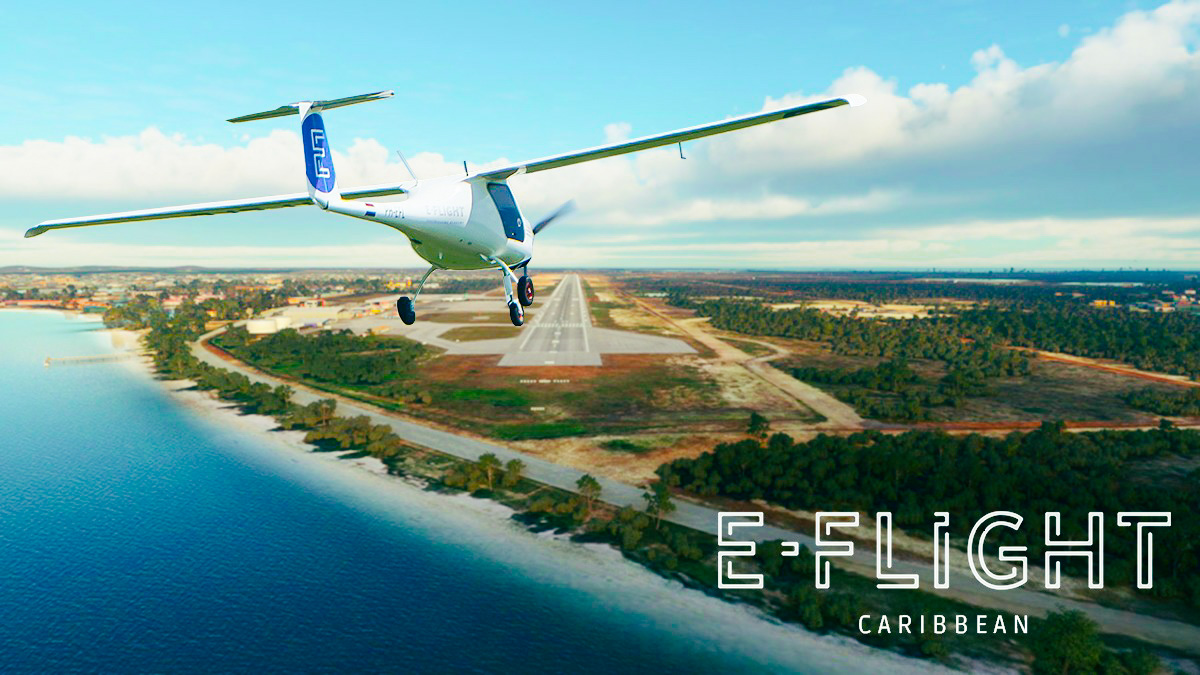No Dutch support for sustainable aviation – StMaartenNews.com – News Views Reviews
 07 June 2025
07 June 2025



PHILIPSBURG -– Sustainable aviation has a lot of potential for the Caribbean part of the Dutch Kingdom but a switch from conventional kerosene-powered planes to battery-electric and hydrogen-fueled ones requires serious investments and the Dutch government is not ready to commit to such a venture.
This appears from a letter outgoing Minister of Infrastructure and Water Management Barry Madlener sent to the Second Chamber, hours before his departure. “Flying electric has a lot of potential in the Caribbean part of the Kingdom and could contribute to a better connectivity between the islands,” Madlener wrote. ”At this moment there is no additional policy effort specifically for the promotion of electric flying on the islands. Further efforts will have to be assessed related to the limited support, the available resources and capacity at Infrastructure and Water Management and with local authorities.”
In other words: according to Madlener there is no money to invest in a transition to sustainable aviation in the Caribbean, even though the potential benefits are clear.
Madlener sent a report to the Dutch parliament entitled, “Survey of the social effects of hydrogen and electrical aviation technologies in the Netherlands and the Caribbean part of the Kingdom.” This report contains an overview of the opportunities and the challenges of the switch to sustainable aviation.
The potential to replace planes one-on-one is better in the Caribbean than it is for Schiphol. Electric flying would enable the Caribbean to open more routes. The report notes that Statia could already replace all planes with hydrogen and battery-electric powered planes. This transition would save the island hundreds up to several thousands of flights per year.
The authors of the report project that up to 20 percent of conventional planes could be replaced by sustainable ones in St. Maarten. For the whole of the Caribbean part of the Kingdom the transition would affect thousands of flights every year. The direct effects of sustainable aviation would be shorter travel times and lower operational costs. Indirectly, the environment could also benefit. In terms of social effects, the report project annual savings of €8 million ($9.12 million) for the Caribbean.
“The introduction of sustainable aviation technology creates new jobs in airplane production and the underlying innovation, in maintenance and in the expansion of energy supply,” the report states.
The improved connectivity in the Caribbean would also have a positive effect on the labor market, due to increased tourism and in the field of logistics.
The report presents two scenarios. One for planes with a capacity between 9 and 30 passengers and a reach of 200 to 400 kilometers; the second scenario focuses on larger planes with a capacity of 90 passengers and a reach between 800 and 1,500 kilometers.
In scenario 1 the Caribbean could realize annual savings of €6 million ($6.8 million) and in scenario 2 this could go up to €11 million ($12.5 million) for travel time-effects and to €1 to €16 million ($1.1 to $18.2 million) for environmental impact. The report puts the total social effects at €8 million ($9.1 million) in scenario 1 and at €16 to €32 million ($18.2 to $36.5 million) in scenario 2.
The bad news is of course that the transition requires serious investments – and the Netherlands is right now not prepared to put the money or any efforts on the table. These investments concern infrastructure like charging stations, hydrogen-storage and airport technology. Then there are one-time expenditures for the development and purchase of new planes, and adjustments at the airport.
The report estimates that small sustainable planes (9 to 20 passengers) would cost anywhere between €10 and €20 million ($11.4 and $22.8 million) and that larger planes (30 passengers) could come with a price tag of €15 to €20 million ($17.1 to $22.8 million). Planes with a carrying capacity above 50 passengers would cost €20 to €60 million ($22.8 to $68.4 million), the report states.
Electrical charging stations would require an investment of €1.7 to €2.5 million ($1.9 to $2.85 million) per megawatt and the cost for hydrogen-infrastructure would even be higher. Maintenance costs could be 50 percent higher than they currently are for conventional planes.
On the upside, sustainable planes would produce less noise.
However, money is not the only challenge facing Caribbean airports. There are also spatial challenges because the infrastructure for the production of hydrogen and electrical networks will compete with other forms of land usage. To add insult to injury: the production of batteries and hydrogen require large amounts of raw materials and these processes are also energy-intensive.
###
Photo caption: Photo taken from DossierKoninkrijksrelaties.nl.
###
ADVERTISEMENT
Related News

Cyclisme: Pogacar, il ne fallait pas le fâcher

Annonces de Darmanin : le maître d’oeuvre, l’Apij, n’était pas au courant

La Jeunesse de Trois Rivières craque en finale

